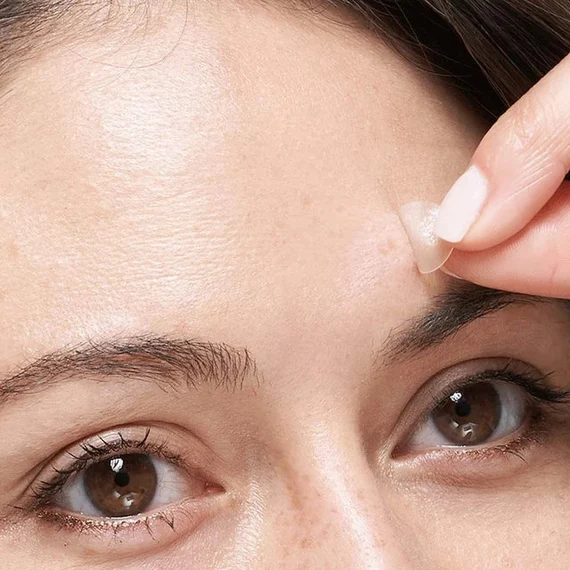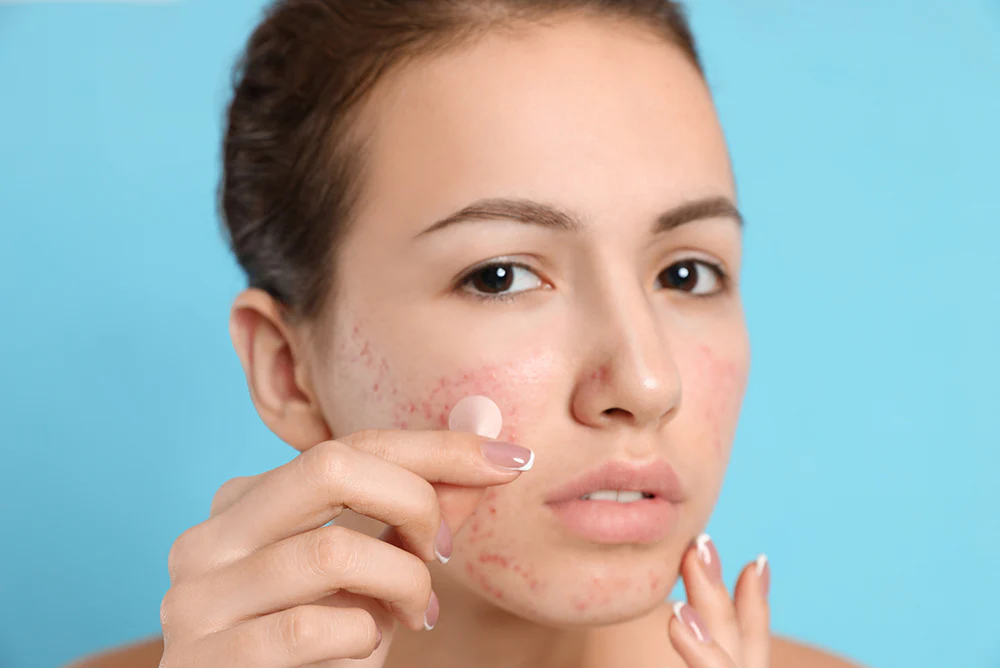The Truth About Pimple Patches: Do They Really Work?
Pimple patches surge in popularity these days. These little acne-treating stickers promise overnight blemish blitzing. But do pimple patches actually work? This in-depth post explores their effectiveness, types, and proper usage. Learn whether these trendy patches truly deliver clearer skin.
The Appeal of Pimple Patches
Do pimple patches work?Pimple patches stand out for several compelling reasons:
Discreet Blemish Camouflage
- The clear, tiny stickers conceal pimples under clothes or makeup
- No one needs to witness angry red spots
Aborting the Urge to Pick
- Patches prevent mindless pimple poking and popping
- This allows proper healing without spreading bacteria
Controlled Medication Delivery
- Many patches contain acne-fighting ingredients like salicylic acid or tea tree oil
- Active components slowly penetrate blemishes overnight
Absorbing Excess Fluid
- Hydrocolloid bandages gradually pull pus or oil from whiteheads
- Used patches turn white as they fill up
These benefits explain the pimple patch hype. Their discretion and preventative protection provide peace of mind. Delivering concentrated treatment enhances the appeal too.
Common Types of Pimple Patches
While united in overall purpose, pimple patches feature varying technologies and materials. Common categories include:
Hydrocolloid Bandages
- These ultra-thin absorbent dressings contain polymers that pull fluid
- Popular pimple patch brands utilize hydrocolloid technology
Microneedle or Dart Patches
- An array of dissolvable solid microneedles pierce pores to infuse medication
- These patch “darts” painlessly delivery ingredients under skin
Absorbing Covers
- An outer layer draws discharge while inner layers protect pimples
- These patch barriers shield zits while absorbing fluids
Blended Formulas
- Some products merge hydrocolloid dressing with microneedle drug delivery
- This combines medicated treatment and prevention methods
Patches differ in thicknesses, materials, and active ingredients. Matching the right type to one’s skin and acne severity proves essential.
The Ideal Pimple Patch Candidates
These stickers suit specific pimple situations best. Patches work well when:
Treating Single, Isolated Pimples
- Patches can tackle individual whiteheads or zits effectively
- Less ideal for widespread acne or cystic breakouts
Calming Early Blemish Onset
- Applying right when a pimple forms aborts the progression
- Patches struggle treating later-stage inflamed breakouts
Preventing Unexpected Emergencies
- Patches protect popped pimples from infection or scarring
- The bandages allow sufficient healing environment
Managing Acne Discreetly
- Patches camouflage blemishes throughout the day or overnight
- Most bypass irritating makeup concealers and drying formulas
Curbing Compulsive Picking
- Those prone to squeezing find hands-off treatment beneficial
- No fingers means no pushing bacteria deeper into skin
For early-stage solitary pimples, patches create optimal treatment conditions. Their preventative care appeals too. However, managing severe or widespread acne likely requires additional solutions.
When Pimple Patches May Underperform
While effective in many situations, patches face limits too:
Cannot Treat Cystic Acne
- Patches sit superficially and can’t tackle deep-rooted cysts
- Professional cystic acne protocols prove more potent
May Not Resolve Blackheads
- Closed, non-inflamed blackheads lack the drainage patches require
- Salicylic acid products work better blackhead unclogging remedies
Less Useful for Body Acne
- Patches conform better to flexible facial areas than torso
- Body acne responds ideally to shower-accessible products
Impact Only Isolated Areas
- Using multiple patches becomes tedious for major breakouts
- Systemic acne treatments better address widespread inflammation
Heavy Exercise Risks Adherence
- Sweating compromises patch-to-skin adhesion during workouts
- Overwear may also transfer medication to clothes or sheets
Sticking to guidelines and understanding limitations prevents disappointment. Patches excel as supplementary acne treatments, not all-in-one cures.

Getting the Most Out of Pimple Patches
To achieve optimal patch performance, these usage tips prove invaluable:
Apply to Cleansed, Dry Skin
- Patches adhere best sans oils or residue which impact bonding
- Be sure to thoroughly cleanse and dry the area first
Use Direct Pressure Briefly
- Gently press on patches to establish total contact with skin
- Added pressure allows absorption materials to activate
Replace as Needed Overnight
- Once completely saturated, swap for a fresh patch
- Monitor for any leakage or sliding during sleep too
Remove Before Makeup or Exercise
- Discard patches before perspiring or applying cosmetics
- Re-application may be needed again later in the day
Combine With Other Treatments
- For synergistic effect, use patches alongside drying lotions or creams
- Patches work best partnered with complementary methods
With proper product usage, whiteheads and pimples targeted overnight usually appear reduced by morning. Patience and consistent effort yield best results.
Assessing and Choosing Pimple Patch Brands
With patches trending, product quality varies considerably. These guidelines delineate top-notch picks:
Opt for Minimal White Cast
- Lower-quality hydrocolloid absorbers sometimes leave behind residue
- Superior formulas remain translucent after delivering their cargo
Compare For Value and Coverage
- While more expensive, larger mega-count patch packages stretch budgets further
- Skimpy individual patch sizing suits spot treatment only
Examine Ingredient Lists for Actives
- The top patches contain concentrated salicylic acid, retinol, or tea tree oil
- More inert patches simply provide surface absorption
Prioritize Skinfluencer Reviews
- Average consumer ratings don’t reflect real-world pimple performance
- Skincare enthusiast appraisals make helpful buying guides
Brand transparency around materials and technology stands crucial too. Opaque ingredient listings or vague performance claims bring skepticism.
While costing more upfront, higher-quality brands present long-term value. Their products achieve visible blemish reduction sooner with consistent usage.

Pimple Patch Pros and Cons
Before stocking up, analyze the potential benefits and drawbacks:
Pros of Pimple Patches
- Discretion for pimples during day or night
- Protects spots from spreading via touch or irritation
- Gradually deliver blemish drying and healing ingredients
- Easy application compared to other spot treatments
- Affordable and non-irritating for most skins
Cons of Pimple Patches
- Require discipline to consistently reapply per blemish cycle
- May not fully resolve deep, cystic-type breakouts
- More challenging on areas other than the face
- Potential pilling, slippage, and incomplete absorption
- Still supplementary to broader acne treatments
Pimple patches provide conveniences but no miracles. They support and assist other acne-clearing methods when utilized properly. Realistic expectations remain key.
The Final Verdict on Pimple Patches
So – do pimple patches work? Yes…with a few disclaimers. These discreet stickers absolutely hold value for situational acne treatment. Their standout benefits include:
Halting Pimple Progression
- Using patches at first blemish sight stems further inflammation
- This prevents pimples from developing into angrier lesions
Overnight Treatment and Protection
- Active ingredients and absorption gradually drain blemishes
- Coverage stops unconscious picking that worsens breakouts
Short-Term Invisible Camouflage
- Patches unobtrusively conceal zits under makeup or clothing
- No need to suffer visibly through unsightly pimple phases
Support for Regimen Staples
- Patches complement and boost other acne system products
- Their precision targeting enhances broader topical treatments
However, patches won’t miraculously eliminate acne altogether. They cannot reliably resolve severe cystic breakouts or hormone-induced flares. Professional dermatological oversight delivers more potent results.


